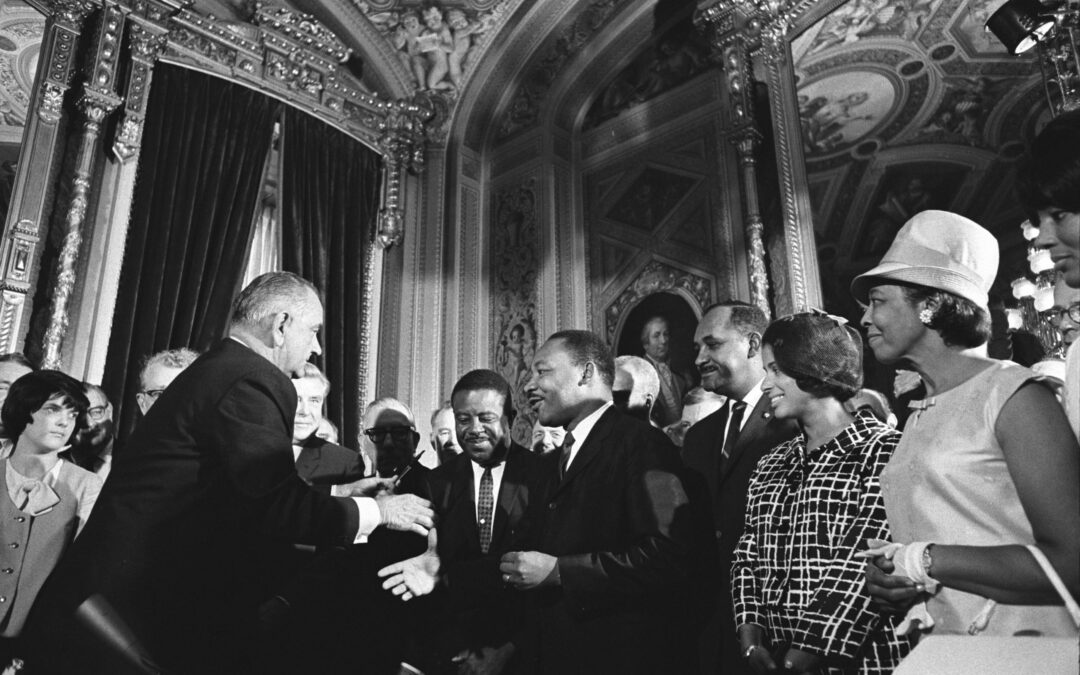LBJ, Martin Luther King, Jr., and Rosa Parks at the signing of the Voting Rights Act on August 6, 1965. Public domain image.
In 1965, in the wake of the shocking violence perpetrated on peaceful voting rights protestors at the historical Selma-Montgomery March, President Lyndon Baines Johnson appeared in front of the U.S. Congress and called for sweeping voting rights legislation to protect the rights of African-American and other disenfranchised voters.
During the speech, LBJ highlighted the tactics that state and local governments had used for decades to oppress minority and poor voters, including poll taxes, “literacy tests”, and other unethical and outrageous requirements, such as asking minority voters to recite the Constitution or explain obscure provisions of state laws in order to receive a ballot.
The president’s campaign and other key events of the civil rights movement ultimately led to the creation of the landmark Voting Rights Act of 1965, which was signed into law on August 6 of that year. The game-changing legislation banned the use of literacy tests, authorized the U.S. attorney general to investigate the administration of poll taxes in state and local elections (the poll tax having been abolished in federal elections the previous year)—and most importantly, provided for federal oversight for voter registration in areas where less than half of the non-white population was unregistered.
Impact
Though many jurisdictions continued to oppress voters in defiance of the new law, turnout among black voters across the U.S. improved significantly in the years following the act’s adoption. Today the Voting Rights Act is considered to be one of the most important pieces of civil rights legislation in U.S. history.
As of this writing (2020), Congress has amended the act five times, either to re-authorize expiring act provisions, or in order to prevent gerrymandering (unfair manipulation of voting district boundaries) and discrimination against non-English-speaking voters.
Additional Learning: “History of the U.S. Voting Rights Act”—National Geographic

